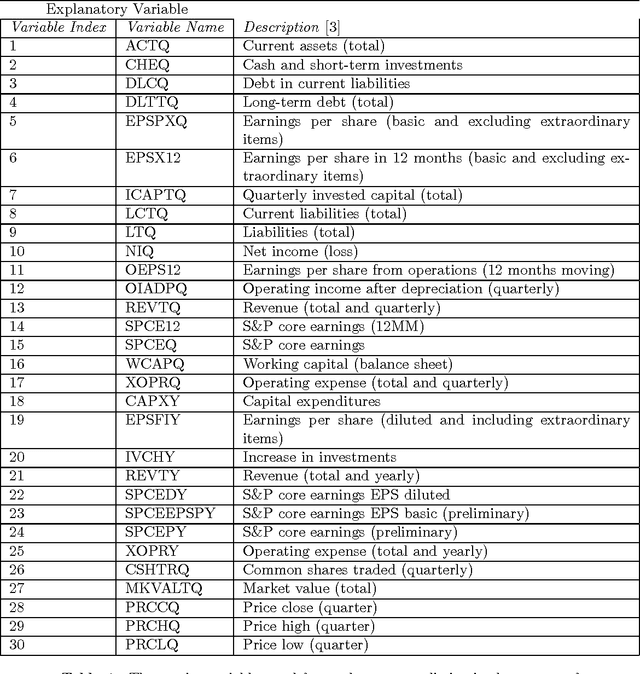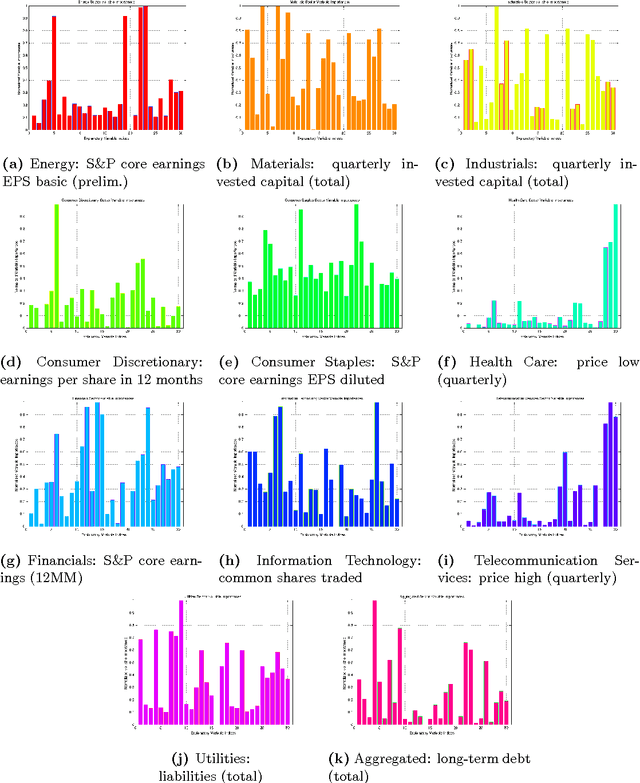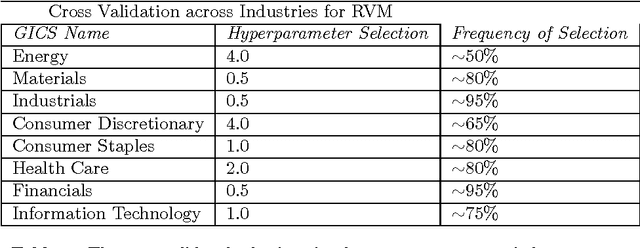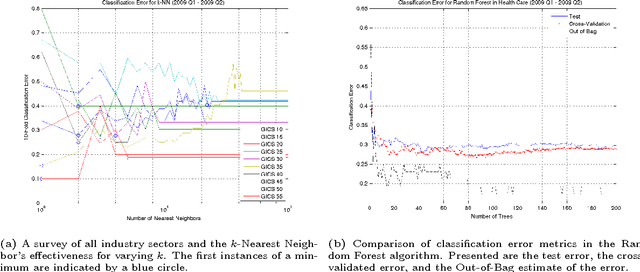Ensemble Committees for Stock Return Classification and Prediction
Paper and Code
Apr 05, 2014



This paper considers a portfolio trading strategy formulated by algorithms in the field of machine learning. The profitability of the strategy is measured by the algorithm's capability to consistently and accurately identify stock indices with positive or negative returns, and to generate a preferred portfolio allocation on the basis of a learned model. Stocks are characterized by time series data sets consisting of technical variables that reflect market conditions in a previous time interval, which are utilized produce binary classification decisions in subsequent intervals. The learned model is constructed as a committee of random forest classifiers, a non-linear support vector machine classifier, a relevance vector machine classifier, and a constituent ensemble of k-nearest neighbors classifiers. The Global Industry Classification Standard (GICS) is used to explore the ensemble model's efficacy within the context of various fields of investment including Energy, Materials, Financials, and Information Technology. Data from 2006 to 2012, inclusive, are considered, which are chosen for providing a range of market circumstances for evaluating the model. The model is observed to achieve an accuracy of approximately 70% when predicting stock price returns three months in advance.
 Add to Chrome
Add to Chrome Add to Firefox
Add to Firefox Add to Edge
Add to Edge